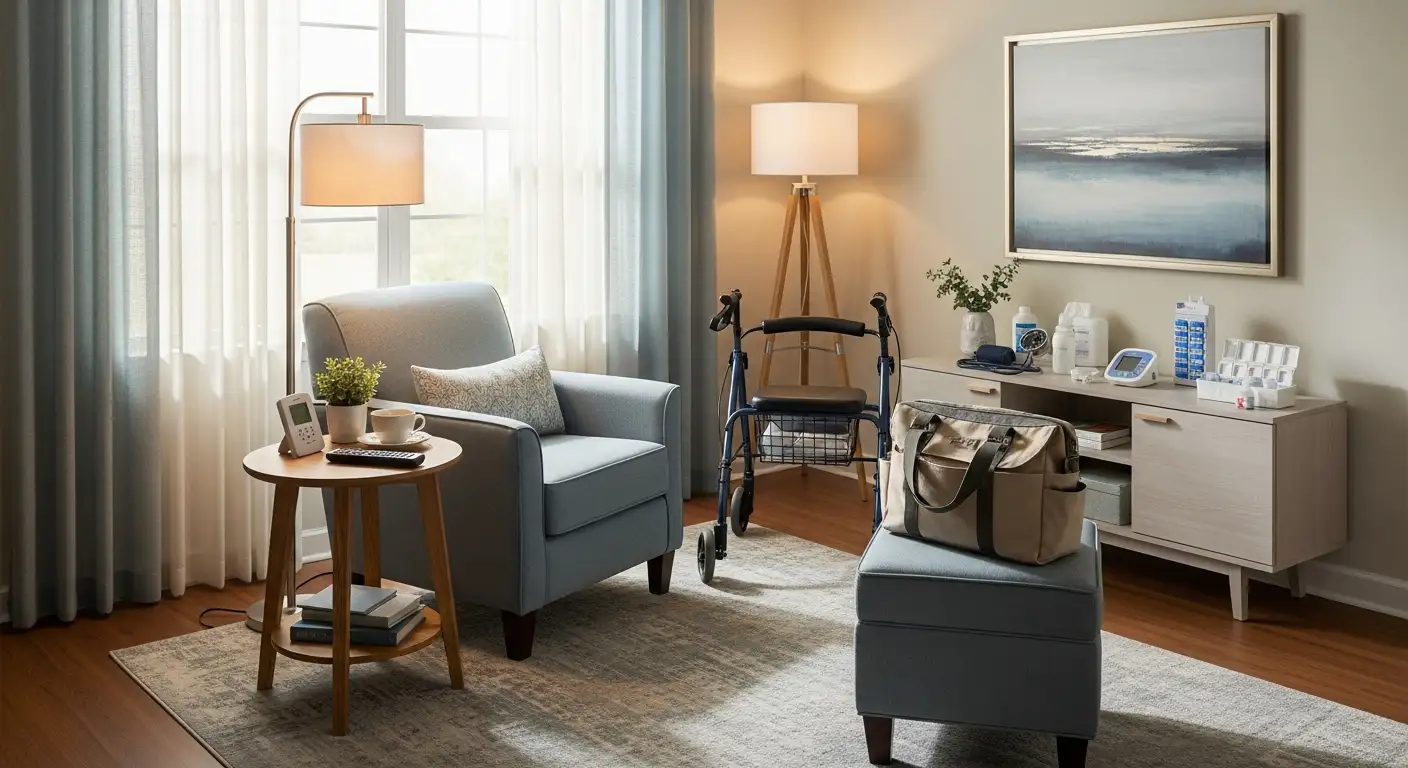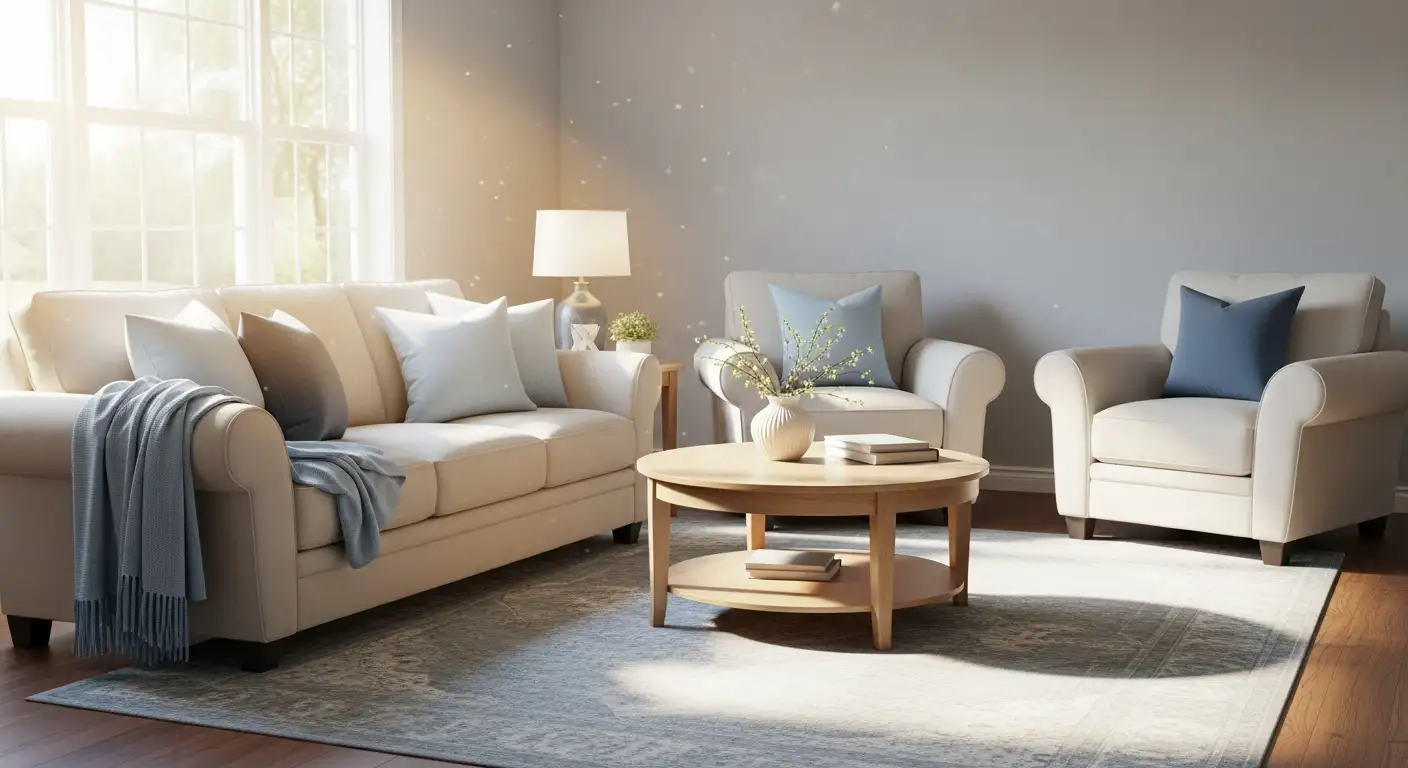Creating a Senior-Friendly Home
Creating a senior-friendly home is essential for promoting independence and safety among elderly individuals. As people age, their needs change, and making appropriate modifications can significantly enhance their quality of life.

Importance of Age-Friendly Homes
Age-friendly homes provide an environment that facilitates mobility and accessibility, ensuring that elderly residents can navigate their space comfortably and safely. These modifications are vital in preventing accidents and falls, which can lead to serious injuries. According to research, many seniors prefer to stay in their homes as they age. Therefore, adapting living spaces to meet their evolving needs is necessary for maintaining their independence.
The concept of age-friendly homes includes various structural adjustments, such as installing grab bars, widening doorways, and improving lighting. Ensuring that homes are equipped to accommodate physical limitations can create a welcoming atmosphere for seniors. A well-designed space not only enhances safety but also promotes emotional well-being by fostering a sense of autonomy.
Initiatives by Age-Friendly Innovators
Age-Friendly Innovators Inc is one organization committed to promoting awareness of the importance of age-friendly environments. Founded by Howard and Sharon Johnson, the initiative began when they realized their own home was not suited for anticipated age-related changes. They sought to create a nonprofit that would help others facing similar challenges, aiming to develop age-friendly single-story homes equipped with adaptive living technologies.
This organization advocates for solutions that facilitate healthy and independent living for seniors. Structured assessments and innovative concepts help guide necessary modifications in homes, emphasizing the importance of safety and accessibility. The Lifelong Housing Certification Checklist is a valuable resource that promotes the creation of accessible and adaptable housing in communities [1]. By focusing on these aspects, Age-Friendly Innovators work towards building supportive environments where older adults can thrive, engage in senior social activities, and maintain their independence.
Outdoor Area Modifications
Making outdoor areas safe and accessible is essential for seniors to maintain independence and enjoy their living space. Two critical modifications that can enhance outdoor safety include pathway construction and repaving, as well as improving outdoor lighting.
Pathway Construction and Repaving
Properly constructed pathways are vital for safe navigation around the home. Uneven surfaces, cracks, or worn paths can pose significant hazards for elderly individuals. To address these concerns, homeowners should consider pathway construction and repaving.
Key features of effective pathways for seniors include:
Modification TypeRecommended WidthRecommended MaterialPathways36 inchesConcrete, brick, or paversRamps (if needed)36 inchesWood or aluminum
These adjustments facilitate mobility and reduce the risk of falls, helping elderly individuals maintain their independence as outlined in various resources [2].
Enhancing Outdoor Lighting
Inadequate outdoor lighting can create dangerous situations, especially during nighttime. Proper lighting is critical for ensuring that seniors can safely navigate their outdoor spaces. Enhancing outdoor lighting involves:
Homeowners should consider upgrading existing fixtures or adding new ones, focusing on areas that are frequently used by seniors. For reference, here are some key outdoor lighting recommendations:
Lighting TypeFeatureLocation RecommendationMotion-activated lightsAutomatically turns on/offEntrances, drivewaysSolar-powered lightsEnergy-efficient, easy installPathways, gardens
Implementing these improvements not only enhances safety but also ensures a more enjoyable outdoor experience for seniors. For additional guidance on modifications that can improve living conditions, check the resource on senior living cost comparison.
Kitchen Upgrades for Seniors
For elderly individuals, a well-designed kitchen is essential. Kitchen modifications can significantly enhance safety, comfort, and usability, making daily tasks easier and more enjoyable. This section will discuss functional kitchen design and key accessibility features tailored for seniors.
Functional Kitchen Design
A functional kitchen is vital for seniors, focusing on practicality to prevent bending and crouching. This design emphasizes features that accommodate aging bodies, promoting safety and efficiency. Key considerations include:
FeatureRecommended MeasurementCounter Height34-36 inches (adjust based on needs)Sink Depth6-8 inches to reduce bendingReachable Shelves16-24 inches from the ground
Details on the costs associated with kitchen modifications range from $8,000 to $50,000 based on the extent of renovations required.
Accessibility Features in the Kitchen
To foster a senior-friendly living space, implementing specific accessibility features is crucial. These adaptations cater to various needs, ensuring a seamless cooking experience. Essential features include:
These modifications not only make cooking more manageable for older adults but also foster independence, allowing them to age comfortably in place. For more tips and insights into modifications for seniors, consider exploring additional resources, including senior companion services and geriatric care management.
Bathroom Safety Enhancements
Creating a safe bathroom environment is crucial for seniors as many slips and falls occur in and around these areas. Implementing bathroom safety enhancements can significantly reduce these risks and increase accessibility.
Installation of Grab Bars
Grab bars are a vital modification for ensuring safety in the bathroom. These bars should be strategically placed in the shower, tub, and next to the toilet to prevent falls and provide support while moving. According to SeniorLiving.com, the placement of grab bars enhances the ability of seniors to transition between sitting and standing.
LocationRecommended Bar LengthShower24 - 36 inchesBathtub16 - 24 inchesNext to Toilet24 - 36 inches
Incorporating grab bars designed following the principles of universal design can enhance stability and independence for individuals with mobility limitations [5]. The installation of these bars provides essential support, making it easier for seniors to navigate the bathroom safely.
Slip and Fall Prevention in Bathrooms
To effectively prevent slips and falls, various features can be integrated into the bathroom design. These include using textured materials for flooring and ensuring that they are water-resistant. Slip-resistant mats and non-slip stickers in the shower or tub area can also provide an additional layer of safety. Many falls for seniors happen in the bathroom, emphasizing the need for thoughtful modifications.
The installation of threshold ramps or plates can create smooth transitions between rooms, eliminating tripping hazards. Another essential aspect is the addition of handrails in the bathroom and on both sides of stairs to further enhance mobility and reduce fall risks.
By focusing on these bathroom safety enhancements, caregivers and seniors can create a safer living environment that supports independence and improves the quality of life. For further information on making homes senior-friendly, explore our articles on related topics such as geriatric care management and aging parent care options.
Home Modifications for Accessibility
Making a home more accessible is essential for enhancing the quality of life for elderly individuals. Simple modifications can significantly improve mobility and safety within the living space. This section focuses on two primary modifications: widening doorways and adjusting countertops, as well as implementing grab bars and safety features.
Doorway Widening and Countertop Adjustments
Widening doorways is crucial for improving accessibility, particularly for those using mobility aids such as wheelchairs or walkers. This modification often involves adjusting wall placements to create a wider opening, which may require the installation of a new, wider door Live In Place Designs. By doing so, individuals can navigate their homes with greater ease and independence.
Lowering countertops and light switch heights can also be beneficial, particularly for wheelchair users. These adjustments ensure that essential areas such as kitchens and workspaces are accessible, allowing seniors to perform daily tasks without unnecessary strain EldercareACL.
Modification TypeDescriptionImpact on AccessibilityDoorway WideningCreating a wider passage for easier movementImproves access for mobility aidsLower CountertopsReducing countertop height for wheelchair usersEnhances functionality in kitchens
Implementation of Grab Bars and Safety Features
Installing grab bars in critical areas of the home, especially in bathrooms, is a simple yet effective way to increase safety. Grab bars can be strategically placed near toilets, in showers, and at stairways to provide support and reduce the risk of falls Community Renovations.
Additionally, using handrails on both sides of stairs is also recommended for enhancing mobility and safety. Upgrading hardware, such as door knobs and handles, to easier-to-use options can further improve accessibility, particularly for those with physical conditions like arthritis Community Renovations.
Safety FeatureLocationBenefitGrab BarsBathroomsProvides support and reduces fall riskHandrailsStairwaysEnhances mobility and stabilityEasy-to-Use HardwareDoors, cabinetsImproves access for individuals with arthritis
By implementing these modifications, seniors can enjoy greater independence and comfort in their homes. For more insights on adjusting living spaces for elderly needs, consider browsing articles on senior nutrition services or geriatric care management.
Cost-Efficient Home Modifications
Making a home more accommodating for seniors does not always require extensive renovations. There are several cost-effective modifications that can significantly enhance safety and accessibility.
Minor Repairs and Improvements
Simple home improvements can yield substantial benefits for seniors. Changes such as replacing traditional doorknobs with pull handles can make daily tasks easier [2]. Other affordable upgrades include:
ModificationEstimated CostReplacing doorknobs$50 - $100Installing grab bars$200 - $300Adding a shower bench$150 - $300Widening doorways$500 - $1,500
These small adjustments can help in maintaining independence and preventing accidents. For further enhancements, converting a first-floor room into a bedroom is recommended, especially for homes with multiple levels. This change improves accessibility and reduces the need to navigate stairs frequently.
Professional Contractor Hiring Tips
When considering more extensive modifications, hiring a professional can be a worthwhile investment. Here are some key tips to consider when selecting a contractor:
The average costs for aging in place remodeling can range from $3,000 to $15,000, with more extensive renovations possibly exceeding $50,000. By taking a thoughtful approach to home modifications, seniors and their caregivers can create a safe, accessible environment that promotes independence and quality of life. Additional resources such as geriatric care management and senior companion services may provide further guidance in the process of creating senior-friendly modifications.
References
[2]:
[3]:
[4]:
[5]:
[6]:



